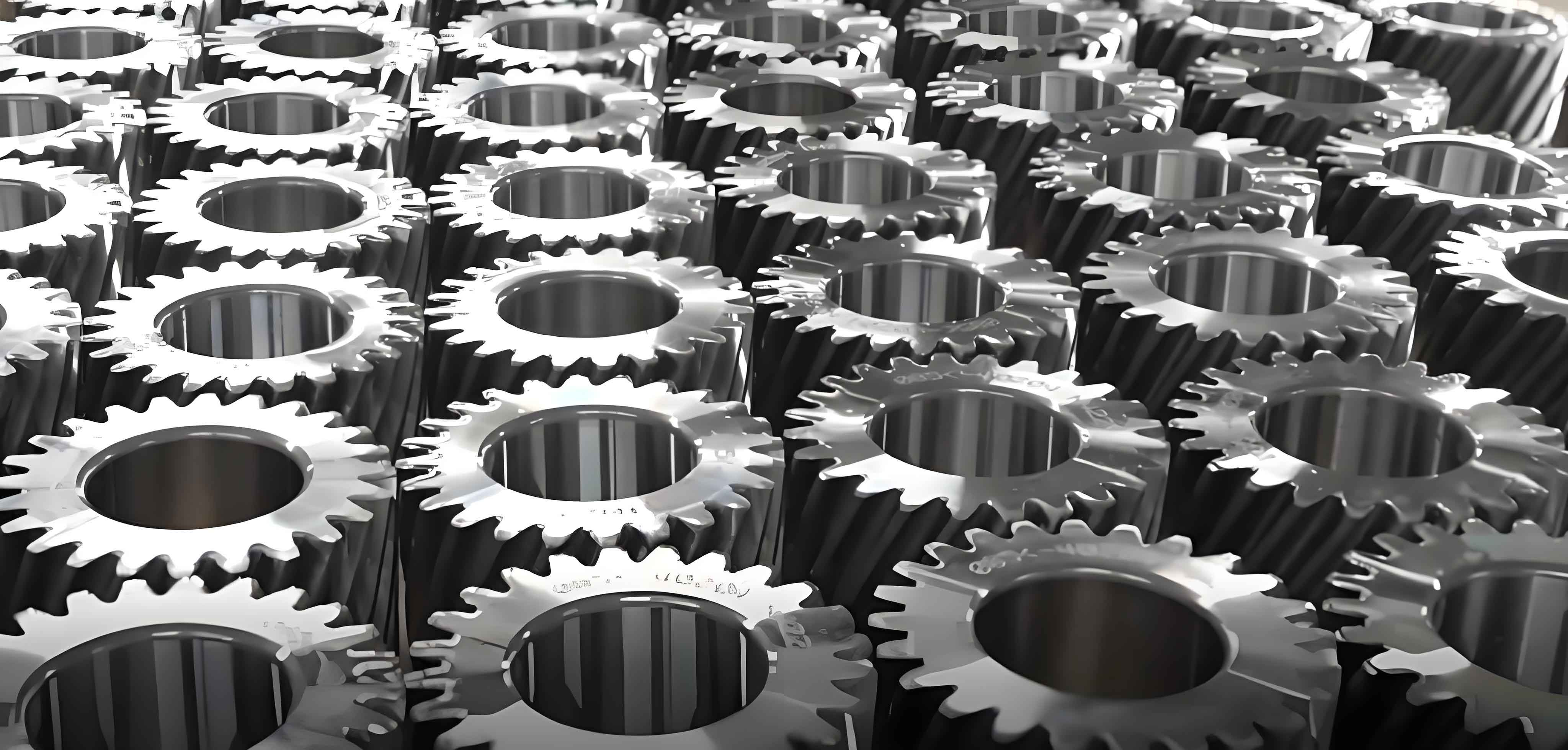Increasing environmental concerns and fossil fuel depletion have accelerated development of electric vehicles (EVs), with in-wheel drive systems emerging as revolutionary configurations that eliminate traditional components like differentials and universal joints. The efficiency of these specialized gearboxes directly impacts overall vehicle performance and range. This research establishes a comprehensive efficiency model for electric vehicle gear systems, addressing a critical gap in EV transmission optimization.

Power Loss Composition in Electric Vehicle Gear Systems
Electric vehicle gear efficiency is governed by four primary power loss mechanisms:
Churning Power Loss
Lubricant interaction with rotating components generates significant churning loss in electric vehicle gear systems. The AGMA ISO14179-1 standard provides this comprehensive model:
$$P_c = \frac{7.37f_g\nu n_i^{3} D_0^{4.7}L}{A_g \times 10^{26}} + \frac{1.474f_g\nu n_i^{3} D_0^{5.7}}{A_g \times 10^{26}} + \frac{7.37f_g\nu n_i^{3} D_0^{4.7}B R_f \sqrt{\tan{\beta}}}{A_g \times 10^{26}}$$
Where $f_g$ = immersion factor, $\nu$ = kinematic viscosity (cSt), $n_i$ = rotational speed (rpm), $D_0$ = external diameter (mm), $L$ = element length (mm), $A_g$ = configuration constant, $B$ = face width (mm), $R_f$ = roughness factor, and $\beta$ = helix angle.
Windage Power Loss
High-speed rotation in oil-mist environments creates windage loss, particularly critical for electric vehicle gear operating at 10,000 rpm:
$$P_w = 2.82 \times 10^{-7}(1 + 2.3\frac{B}{r})n^{2.8}r^{4.6}(0.028\mu + 0.019)^{0.2}$$
Where $P_w$ = windage power (kW), $r$ = pitch radius (m), and $\mu$ = oil-air mixture dynamic viscosity (cP).
Gear Meshing Efficiency
Helical gear meshing efficiency in electric vehicle gear systems is derived through integral methods:
$$\eta_F = \frac{K}{i} \left\{ \left[ \left( \frac{\cos\beta_0}{f} + \frac{\tan\alpha_n}{\cos\beta} \right) R_1 + \left( \frac{\cos\beta_0}{f} + \frac{\tan\alpha_n}{\cos\beta} \right) R_2 \right]^{-1} \right\}$$
Where $K$ = tooth geometry coefficient, $R_1$, $R_2$ = functional relationships, $f$ = friction coefficient.
Bearing Power Loss
Bearing efficiency ($\eta_B$) ranges 0.980-0.995 for rolling bearings and 0.970-0.990 for sliding bearings under proper lubrication. This study uses $\eta_B$ = 0.990.
Total Efficiency Model for In-Wheel Drive Gearboxes
The two-stage gearbox efficiency model integrates all loss mechanisms through this relationship:
$$\eta = \prod_{i=2}^{a} \eta_{Bi} \times \prod_{i=1}^{b} (\eta_F \eta_{L1} \eta_{L2})_i$$
Where $\eta_{L}$ represents churning/windage efficiency for each gear:
$$\eta_{Li} = \frac{P_i – P_c – P_w}{P_i}$$
This configuration accounts for series-connected meshing/bearing losses and parallel churning/windage losses.
Parametric Sensitivity Analysis
Using MATLAB, we quantified how electric vehicle gear design parameters influence total efficiency under fixed operating conditions (P=10kW, n=10,000rpm, $\nu$=60cSt):
| Parameter | Baseline | Range | Optimal Value | Efficiency Impact |
|---|---|---|---|---|
| Pinion Teeth ($z_1$) | 30 | 10-50 | 23 | Peak efficiency at $z_1$=23 |
| Normal Module ($m_n$) | 2mm | 1-4mm | 1-2mm | Sharp decline >2mm |
| Helix Angle ($\beta$) | 20° | 8°-45° | 20° | Peak efficiency at $\beta$=20° |
| Transmission Ratio ($i$) | 3 | 1-6 | 1 | Monotonic decrease |
Operational Impact on Electric Vehicle Gear Efficiency
System efficiency responds significantly to operating conditions:
$$ \eta = f(\nu, k, f) $$
| Parameter | Symbol | Baseline | Range | Impact Trend |
|---|---|---|---|---|
| Kinematic Viscosity | $\nu$ | 60cSt | 30-120cSt | Decreasing efficiency |
| Oil Immersion Depth | $k$ | 0.8h | 0.5-1.2h | Decreasing efficiency |
| Friction Coefficient | $f$ | 0.06 | 0.04-0.10 | Decreasing efficiency |
Quantitative Analysis of Loss Distribution
For a production in-wheel electric vehicle gear system (31/78 and 29/76 gear pairs), total efficiency reaches 91.14% at 10kW input. Power loss distribution reveals:
$$ \text{Total Loss} = 100\% – \eta = 8.86\% $$
| Loss Mechanism | Percentage Contribution | Primary Influence Factors |
|---|---|---|
| Churning Loss | 51% | Viscosity, immersion depth, rotational speed |
| Bearing Loss | 21% | Bearing type, preload, lubrication |
| Meshing Loss | 20% | Tooth geometry, surface finish, lubrication |
| Windage Loss | 8% | Rotational speed, oil mist density |
Conclusion
This research establishes a comprehensive efficiency model for electric vehicle gear systems in in-wheel drive applications. The analysis demonstrates that churning loss dominates total power dissipation (51%), followed by bearing (21%) and meshing losses (20%). Pinion tooth count ($z_1$) and normal module ($m_n$) significantly influence efficiency, with optimal values identified at $z_1$=23 and $m_n$=1-2mm. Lubricant viscosity ($\nu$) shows the strongest operational influence. These findings enable optimized electric vehicle gear design for improved range and performance. Future work should investigate surface engineering and advanced lubrication techniques to further reduce churning losses in high-speed electric vehicle gear applications.
